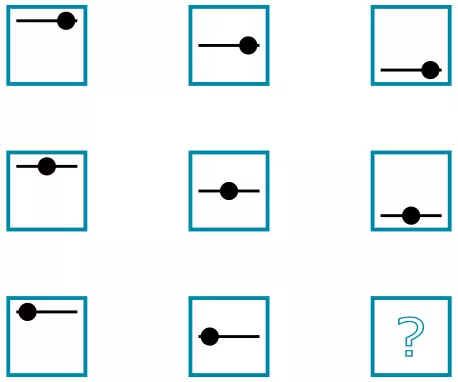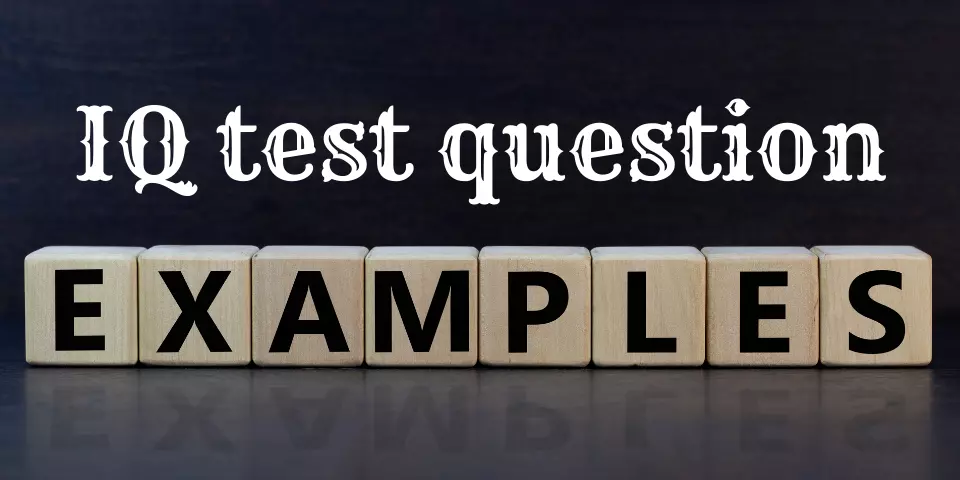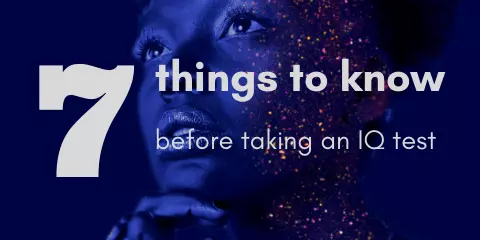IQ tests consist of different types of questions. The questions focus on various aspects of the examinee, to get as accurate an analysis as possible.
Is familiarity with such questions likely to give the examinee an advantage? Can practicing sample questions of an IQ test affect your IQ score? The answer is controversial, but the sure thing is that it can not harm your score.
In this article, we will present IQ test questions examples. Also, we will understand how to solve them correctly.
- The questions are of varying degrees of difficulty.
- The correct answer appears after each question.
- If you want to examine yourself, we recommend that you do not scroll down the page, but try to solve the question yourself.
Question 1







Question 1 explanation:
In this question, there are nine different shapes. You can notice that there is a relationship between the shapes. The relationship is both horizontally and vertically.
Vertical: In each row from top to bottom, the circle is on the right side of the line going to the middle and to the left.
Horizontal: In each column from left to right, the line starts up, goes to the middle, and goes down.
The missing shape consists of a bottom line, with the circle in its left part. Therefore, the correct answer is C.
Question 2







Question 2 explanation:
Such questions are more confusing than the previous question. The challenging part is to understand that although all the shapes are similar to each other, there is no relationship between the columns.
If we look at each column individually - we will not find a pattern that will lead us to a solution. The pattern will only appear if you look at each line individually.
The rightmost shape in each row contains only the overlapping green parts that are in the shapes to its left.
Therefore, the correct answer is D.
Question 3







Question 3 explanation:
These questions are also called mirror questions. The purpose of these questions is to test your ability to imagine what the shape will look like from a different angle.
The shape does not have to be a reflection of a mirror, but also rotates at different angles - 90, 180, or 270 degrees. In this case, the rotating object is a shape, but it can also be text.
The correct answer is F.
Question 4







Question 4 explanation:
Arithmetic progressions and geometric series are also very common.
It is important to know that these questions do not require extensive mathematical knowledge. Only addition, subtraction, multiplication, and division.
In this question, the pattern is the subtraction of 1, the addition of 2, the subtraction of 3, the addition of 4, and so on. Therefore the correct answer is A.
Question 5







Question 5 explanation:
Some questions can not be prepared for. These questions test your ability to think outside the box. Therefore such questions are considered more difficult questions. What characterizes such questions is that some people can find the solution relatively quickly, and some people will not find it.
In this question, you can draw all the shapes with a pen, without repeating the lines and without lifting the pen from the paper. The correct answer is F, because it is the only shape that maintains the same pattern.
If you have not found the solution to this type of question, there is something crucial to know:
There is no need to stress because of only one question. The effect of one question on your score is minor. Wasting time on one question will leave you less time to concentrate on the following questions and may hurt your score.
In addition, there is no need to take the feelings that you have not been able to solve one question for the rest of the test and lower your confidence. Do not let a single question affect you on the overall test. Just leave it for the end of the test.
It is important to note that the above questions exist in Culture Fair IQ tests.
In tests of this type, the examinee is not asked vocabulary questions to avoid an advantage for speakers of a particular language.
In non-Culture fair IQ tests, there are other types of questions, such as vocabulary questions, logic, word analogies, and more.
Discover your accurate IQ, and take Brainalytics' free IQ test →


